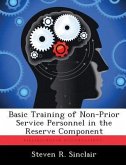
Broschiertes Buch
26. Oktober 2012
Creative Media Partners, LLC

6,99 €
Sofort per Download lieferbar
Ähnliche Artikel

Broschiertes Buch
29. Oktober 2012
Creative Media Partners, LLC

Broschiertes Buch
17. Oktober 2012
Creative Media Partners, LLC

Broschiertes Buch
21. November 2012
Creative Media Partners, LLC

Broschiertes Buch
12. November 2012
Creative Media Partners, LLC

Broschiertes Buch
17. September 2012
Creative Media Partners, LLC

Broschiertes Buch
11. Oktober 2012
Creative Media Partners, LLC

Broschiertes Buch
19. November 2012
Creative Media Partners, LLC

Broschiertes Buch
11. Oktober 2012
Creative Media Partners, LLC

Broschiertes Buch
6. Dezember 2012
Creative Media Partners, LLC

Broschiertes Buch
13. November 2012
Creative Media Partners, LLC
Ähnlichkeitssuche: Fact®Finder von OMIKRON
